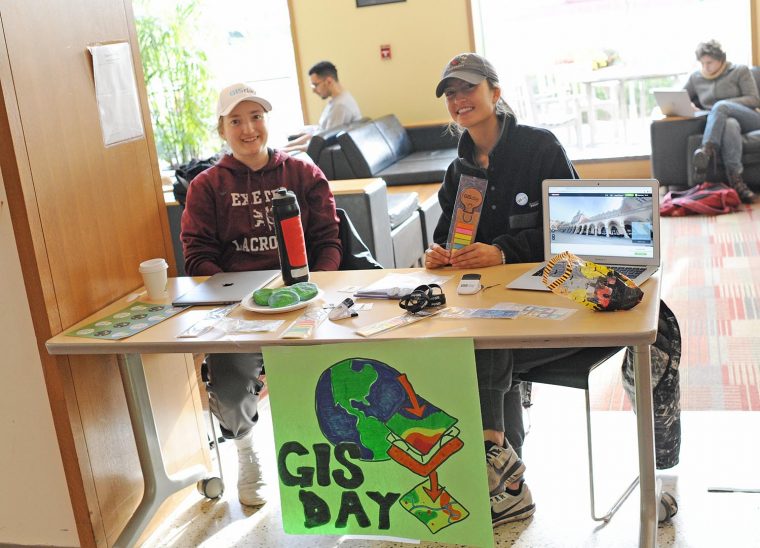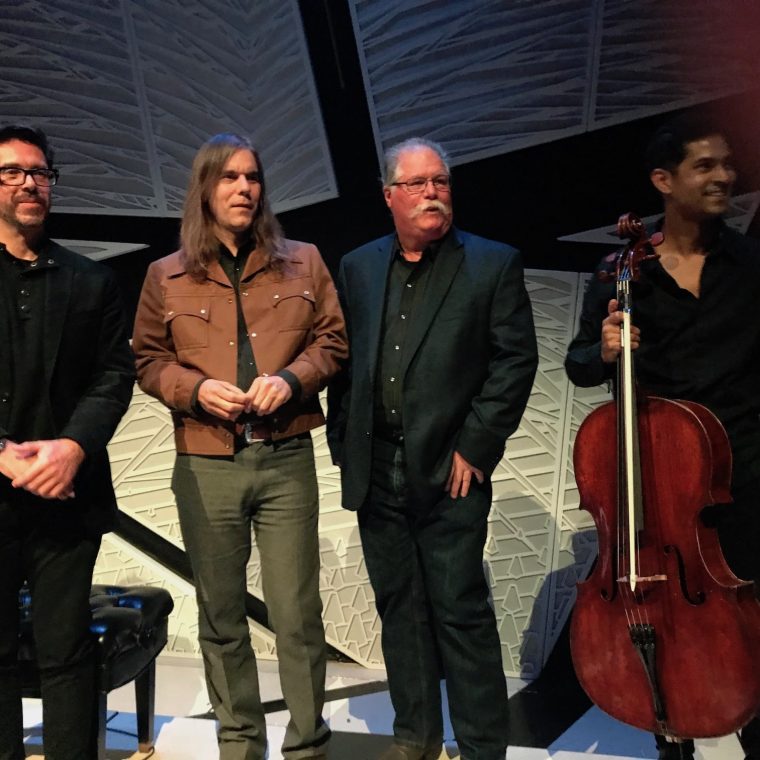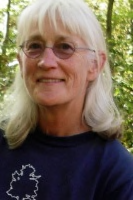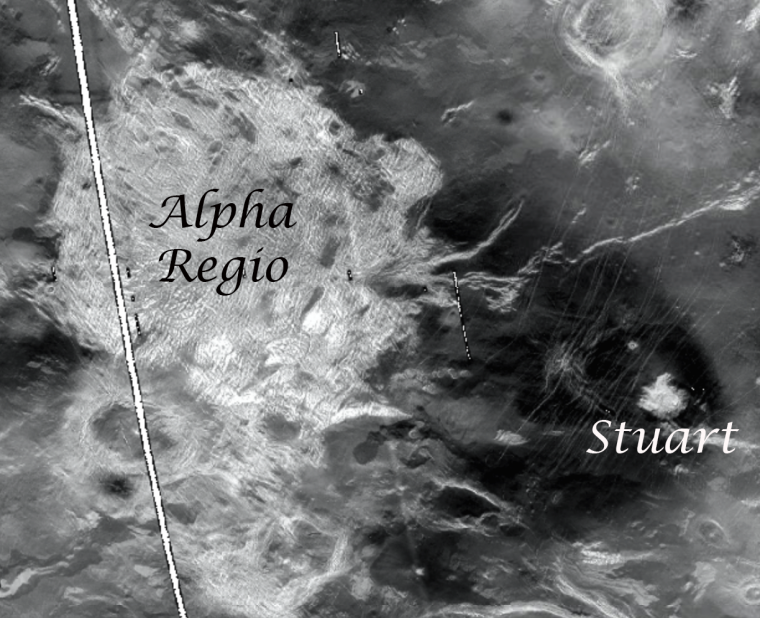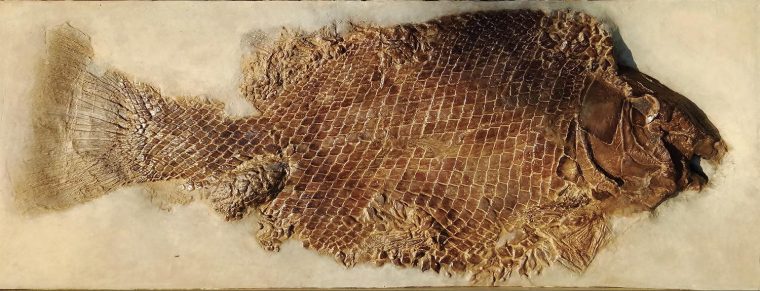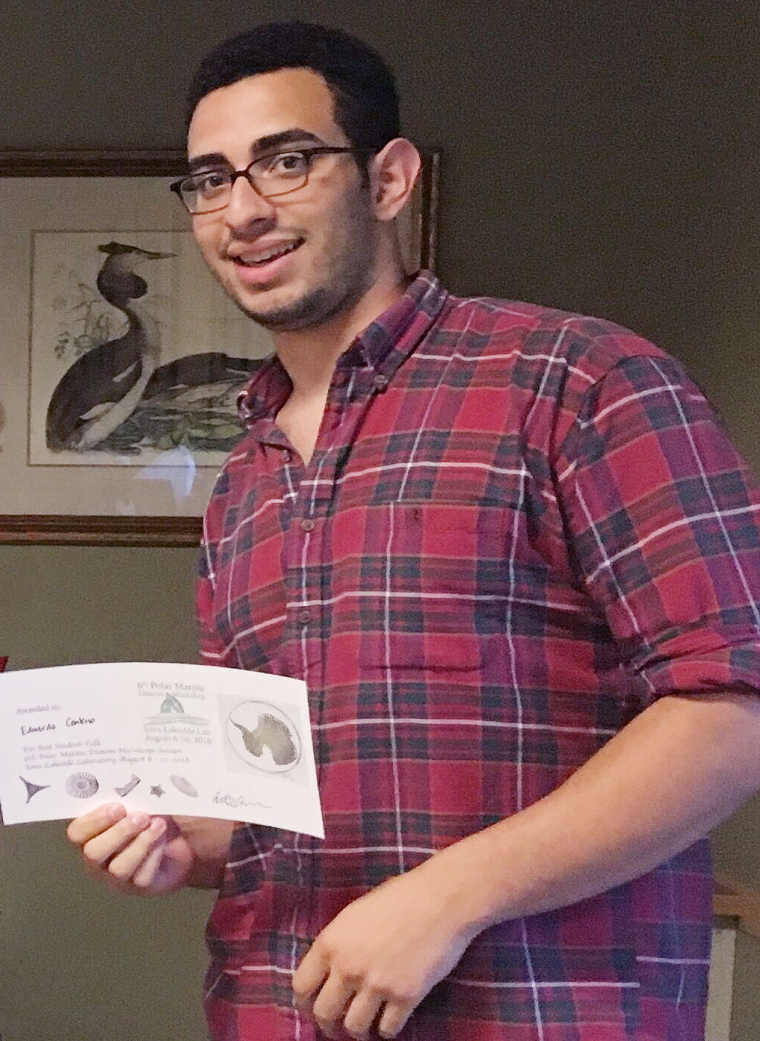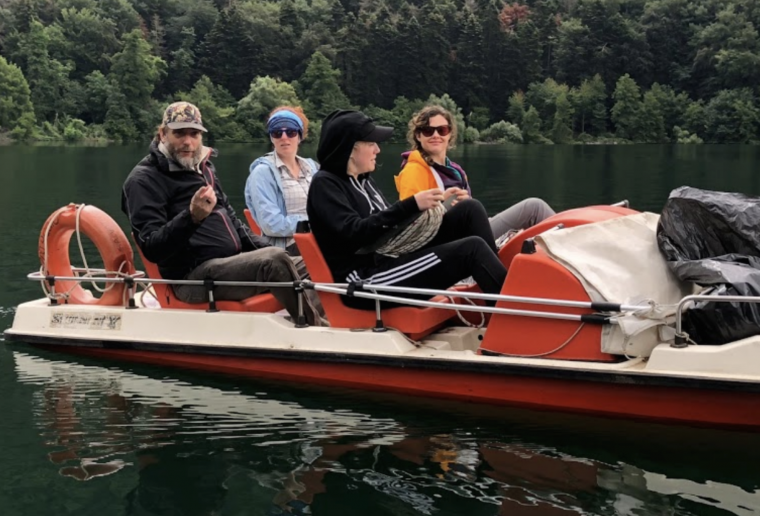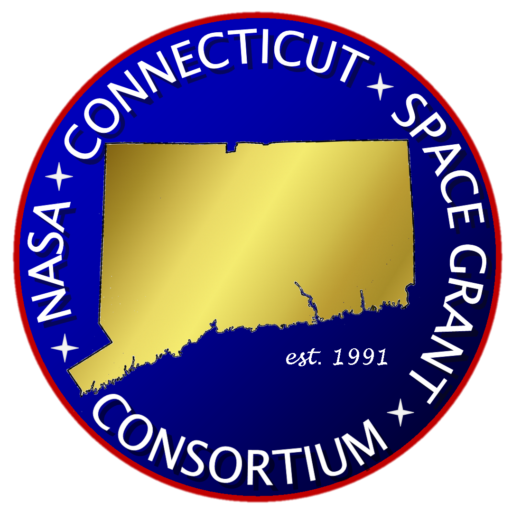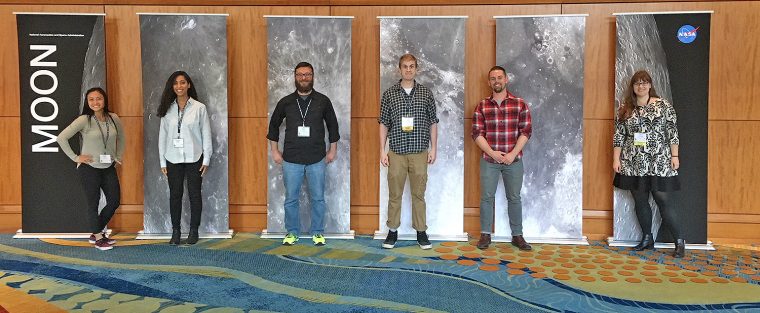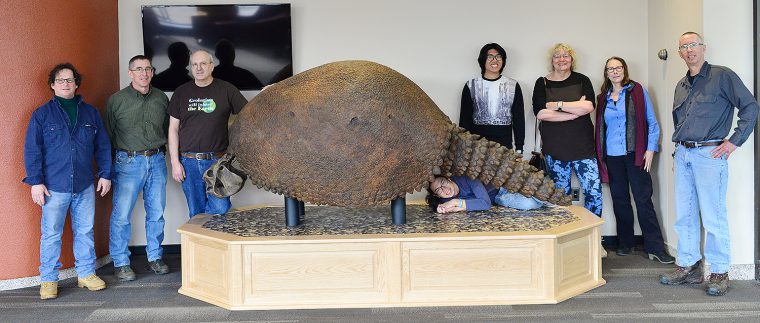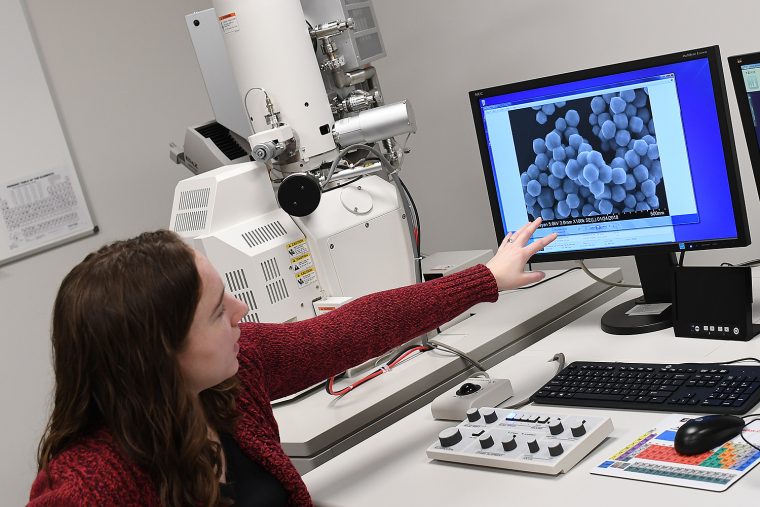On Nov. 14, Wesleyan celebrated geography, mapping, and spatial data analysis at the annual GIS Day. GIS Day provides an international forum for users of geographic information systems (GIS) technology to demonstrate real-world applications that are making a difference in our society. The first formal GIS Day took place in 1999. During GIS Day, the Wesleyan community was invited to participate in multiple activities, including a hands-on humanitarian map-a-thon, a seminar on digital storytelling with maps led by Sam Raby '17, and games involving "Fun with GIS." The events were led by students taking the E&ES 281: GIS Service Learning course…
Barry Chernoff, director of the College of the Environment, was one of eight scientists recently honored with a new musical composition based upon his research—part of a concert and album titled "The Sound of Science, performed in New York City on Nov. 10. The project aims to build "bridges between the musical and scientific worlds, celebrating their shared culture of inquiry," according to the website. The pieces were written by seven celebrated composers for amplified cello and electronics, and were all recorded and performed by world-renowned cellist Jeffrey Zeigler, longtime member of Kronos Quartet and several other groups. The Grammy…
Wesleyan faculty frequently publish articles based on their scholarship in The Conversation US, a nonprofit news organization with the tagline, “Academic rigor, journalistic flair. In a new article,Suzanne O'Connell, professor of earth and environmental sciences, writes about the important findings that have resulted from 50 years of scientific drilling on the ocean floor—and how much is still unknown. Scientists have been drilling into the ocean floor for 50 years – here’s what they’ve found so far It’s stunning but true that we know more about the surface of the moon than about the Earth’s ocean floor. Much of what we do…
Like planet Earth, the geology of Venus is diverse; consisting of areas of flat plains and deformed, mountain-like terrains called tesserae. And like Earth, Mars, and the Moon, Venus is checkered with hundreds of craters. “What's odd about Venus's craters, is that craters we do see are relatively young, indicating the surface of Venus has been covered by planet-wide volcanic flows," says Martha "Marty" Gilmore, George I. Seney Professor of Geology, professor of earth and environmental sciences. “The tesserae are the only terrains older than these volcanic flows and thus our only hope at accessing rocks from the first billion…
In 1870, Orange Judd bequeathed Wesleyan $100,000 to build Judd Hall, which was designed as a building for the study of natural sciences. Included with this building was the Wesleyan Museum, which housed a prominent natural history collection containing over 300,000 specimens. In 1957, the museum was closed and specimens were donated to other museums, put into storage in various places on campus, or "temporarily" loaned to local schools. In 1970, before the current museum reopened in Exley, the collection stored in the tunnels under Foss Hill was found to have been severely vandalized, with many specimens lost, stolen, or…
Wesleyan earth and environmental sciences major Eduardo Centeno ’19 was honored for presenting the "best undergraduate talk" at the 6th Polar Marine Diatom Workshop (PMDW), held Aug. 6–10 at Iowa State University. The honor also earned him a featured appearance on Iowa Public Radio. Centeno, a McNair Scholar, discussed his research titled "Environmental Interpretation of the mid-Pliocene at Site 697." For this study, Centeno examined the diatoms (fossils of algae) off of the coast of the Antarctic Peninsula using a marine sediment core drilled at a location known as Site 697. "Diatoms are really important microscopic plants that have been estimated to…
This summer, three Wesleyan students and one faculty member attended a field workshop in Basilicata, Italy, where they presented research, collected data, and visited an extinct volcano containing two bubbling crater lakes. The International Summer Meeting on Volcanic Lakes, hosted by the International Association of Volcanology and Chemistry of the Earth’s Interior, took place June 25–29 and focused on the theme “Different perspectives and approaches to studying a volcanic lake." Basilicata is home to the 3,350-foot-high Mount Vulture (pronounced "Vool-tor-eh"), which last erupted 40,000 years ago. The Wesleyan attendees included Department of Earth and Environmental Sciences (E&ES) graduate students Christina…
Three undergraduates and one graduate student received NASA Connecticut Space Grant Awards from the NASA Connecticut Space Grant Consortium (CTSGC). The CTSGC is a federally mandated grant, internship, and scholarship program that aims to inspire the pursuit of careers in science, technology, engineering, and mathematics. Astronomy and math major Nicole Zalewski '20 received a $5,000 undergraduate research fellowship to pursue her study on “Measurement of the Radar Properties of the Oldest Rocks on Venus to Constrain Mineralogy." Her advisor is Martha Gilmore, the George I. Seney Professor of Geology, professor of earth and environmental sciences, co-coordinator of planetary science, and…
Throughout time, rising oceanic and atmospheric oxygen levels have been crucial to the habitability of environments at the surface of the Earth. "The Earth had no free oxygen gas in its atmosphere early on," said Ellen Thomas, the Harold T. Stearns Professor of Integrative Sciences. "The oxygen has been provided over time by photosynthesis of algae followed by storage of organic matter in rocks." Thomas, who also is research professor of earth and environmental sciences, examines the timing of oxygen formation in Earth's atmosphere and oceans over geological time in a study published in the May 2018 issue of Science.…
Faculty, graduate students, and alumni attended the 49th Lunar and Planetary Science Conference March 19–23 in The Woodlands, Texas. Three graduate students were awarded funds from the NASA Connecticut Space Grant that allowed them to travel to this meeting. Earth and environmental sciences graduate student Reid Perkins presented a research poster titled "Where Are the Missing Tessera Craters on Venus?" Perkins's advisor is Martha Gilmore, the George I. Seney Professor of Geology, professor of earth and environmental sciences. Earth and environmental sciences graduate student Melissa Luna presented a poster titled "Multivariate Spectral Analysis of CRISM Data to Characterize the Composition of Mawrth…
For the past 60 years, a massive megafauna mammal thrived in crates buried in Wesleyan's tunnels and attics. This month, the creature, known as a Glyptodon, has emerged in Exley Science Center for public viewing. Although the armored armadillo-like animal became extinct more than 10,000 years ago, Wesleyan acquired a fossil cast in the 1870s, where it became a showpiece at the university's Orange Judd Museum of Natural Sciences. In 1957, the museum closed and thousands of artifacts, including the Glyptodon, were haphazardly stuffed into crates and boxes and hauled to multiple locations throughout campus. "After the museum closed, everything was scattered all…
By using a newly acquired electron microscope, the E&ES 368 Meteorites and Cosmochemistry class was able to classify a meteorite discovered in Morocco. "We were able to determine that it was an H4 ordinary chondrite, and the chemical information being collected today will be used to document these findings and submit this meteorite to the Meteorite Nomenclature Committee of the Meteoritical Society for official classification," said class instructor Jim Greenwood, assistant professor of earth and environmental sciences. Wesleyan acquired the field-emission scanning electron microscope (FE-SEM) with support from a $202,300 National Science Foundation grant awarded in August 2017. Greenwood and Michelle Personick,…


